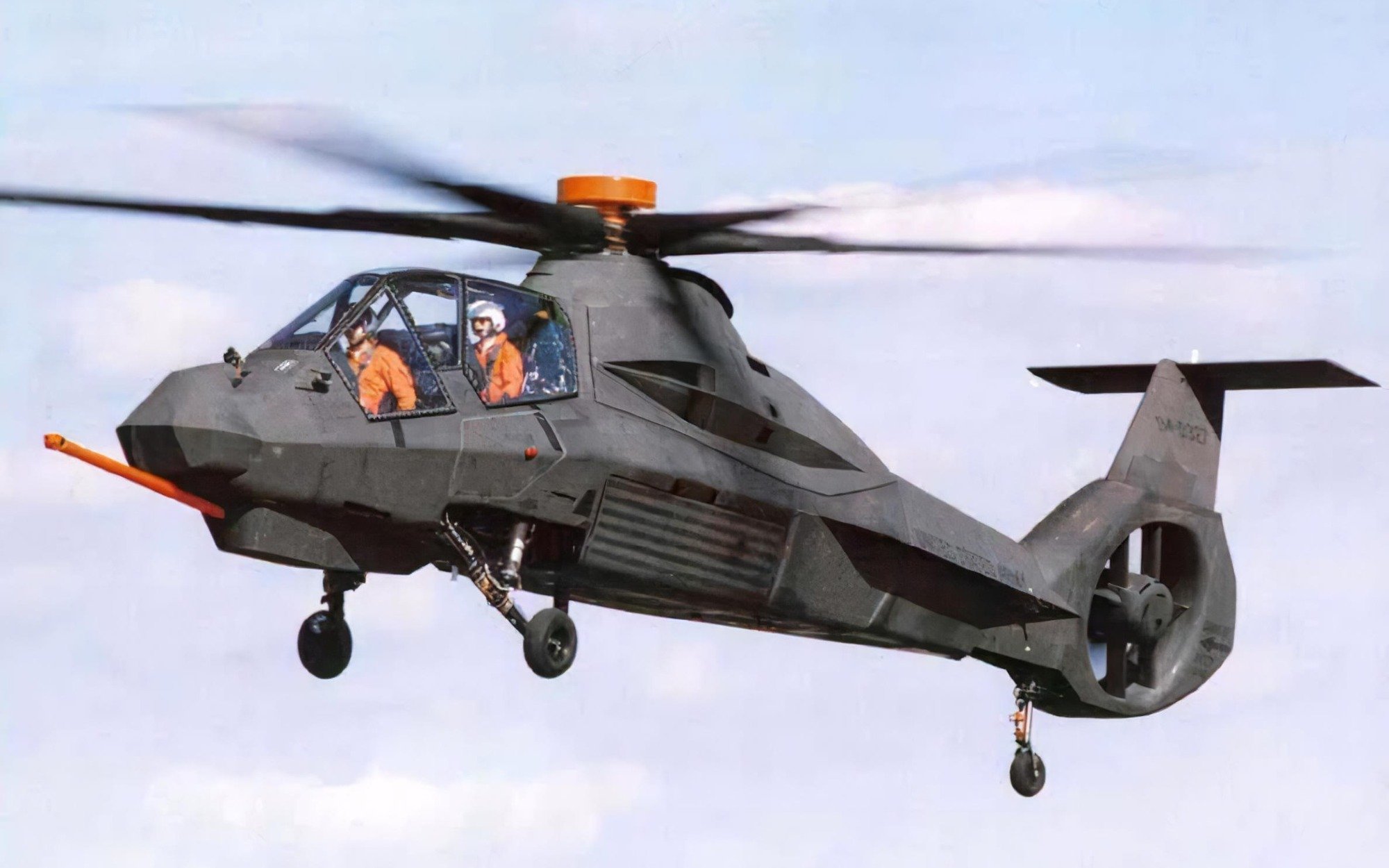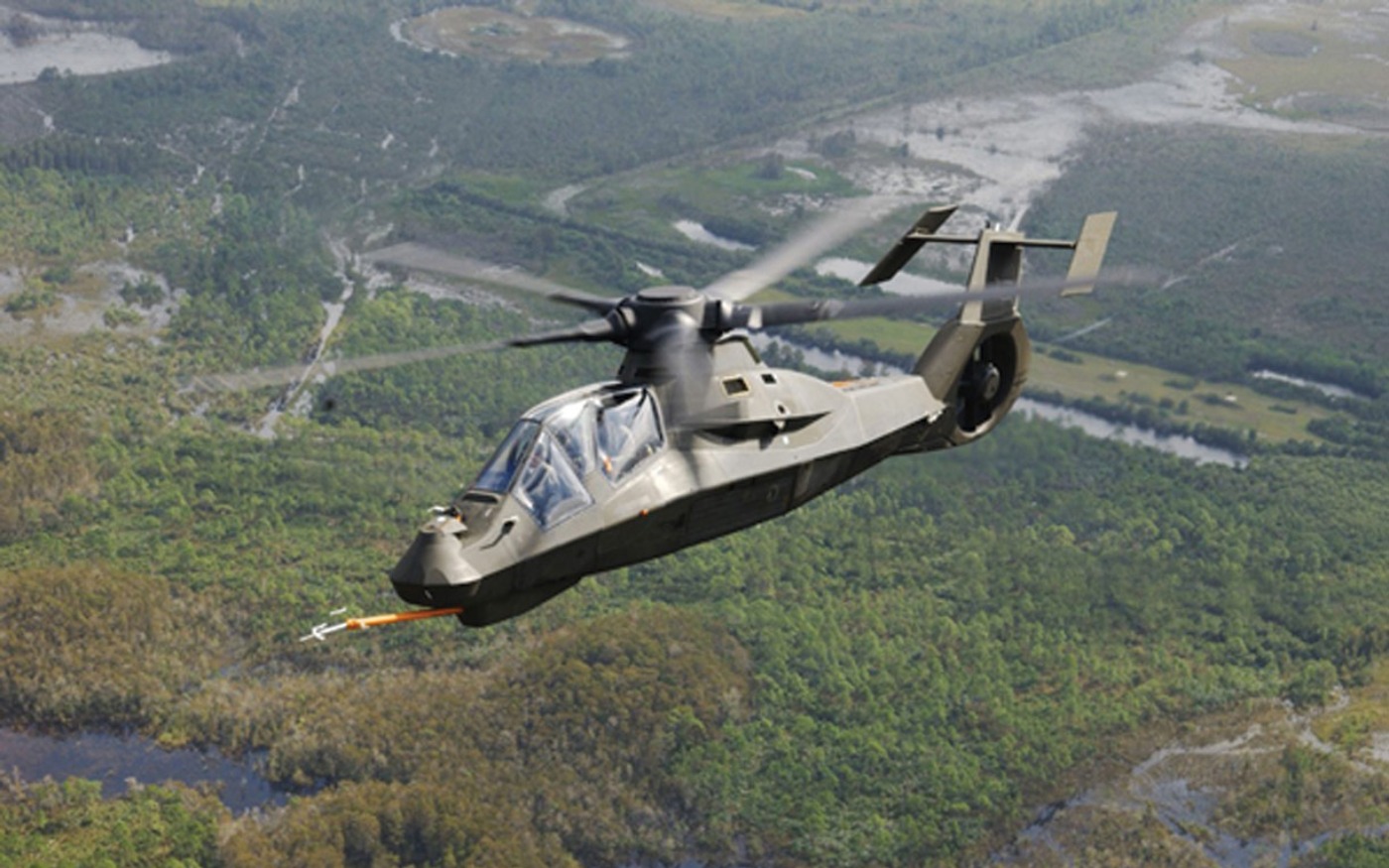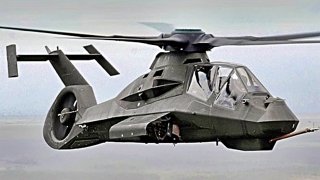RAH-66 Comanche: $7 Billion Spent on a Stealth Helicopter That Failed
The U.S. Army’s RAH-66 Comanche was one of the greatest helicopters ever designed without later being produced. For the cost of $7 billion over about a decade, the Army, in conjunction with Boeing/Sikorsky and a slew of other defense contractors, flew two prototypes of the stealth helicopter.
The U.S. Army’s RAH-66 Comanche was one of the greatest helicopters ever designed without later being produced.

For the cost of $7 billion over the course of about a decade, the Army, in conjunction with Boeing/Sikorsky and a slew of other defense contractors, flew two prototypes of the stealth helicopter. They were to be the first of some 1,213 units that would have started to deploy in 2006.
The two prototypes were displayed and flown in 1995 and 1996. For the next eight years, the program would move at a snail’s pace. In 2004, the Army canceled it.
RAH-66: A Boondoggle?
Billions of dollars, countless man hours, and other resources were spent on the revolutionary project starting around 1982. It is believed that full production of these helicopters would have cost about $39 billion.
The consolation prize for the scrapped project is twofold. First, the $7 billion spent on the research and development phase of the prototypes was nothing compared to that $39 billion price tag attached to full-scale development. Second, the research committed to developing these birds helped the military take rotor-craft design into the next century.
The RAH-66 Comanche Helped Build the Stealth Black Hawks Used in the Bin Laden Raid
For example, the helicopters that the U.S. Navy SEALs used to take out Osama Bin Laden in 2011 are reported to have been an experimental design. While they were similar to the standard Black Hawk helicopter, they might have been stealth variants.

Undoubtedly, the lessons learned from designing and developing the Comanches would have gone into these stealthy Black Hawk helicopters.
Like most stealth aircraft, the Comanches were designed with internal weapons bays to cut down on their radar cross section. These birds had two T800 turboshaft engines that were “ducted further toward the tail with inlets that funnel cool air into the outflowing exhaust to mitigate infrared detection,” according to Alex Hollings.
The Comanche, like all modern American stealth aircraft, was made of mysterious-looking black composite skin. The hub of the main rotor was further covered to reduce the radar-reflecting surfaces, along with the noise of the rotorcraft. The rotor was covered and ducted, too.
These innovative birds were equipped with a five-blade rotor, as opposed to the four-blade rotors of the Cobra, Kiowa, and Apache helicopters that dominate America’s rotorcraft fleet. That’s because more blades reduce the amount of noise generated by the rotors when the bird lifts.
Comanche Payload
The Comanche would come equipped with a standard U.S. Army 20mm three-barrel General Electric autocannon in a French GIAT turret. Comanches would have come with the same scan-and-attack capabilities as the Apache Longbow. But the compact design (for stealth purposes) would have given them the same nimbleness as a Kiowa reconnaissance helicopter, according to Military Factory.
This bird came with optional stub wings for increased armament capacity and could have been equipped with Hellfire anti-tank missiles, Stinger air-to-air missiles, and Hydra 2.75” rocket pods. The stub wings nearly doubled the helicopter’s weapons-carrying capacity.
America’s military attempted to catapult their helicopter design to the next level with the development of the Comanche. Ultimately, the program failed. But the lessons learned were instrumental in creating next-generation craft, and some of the details remain highly classified today.
We Are Less Safe Without These Birds
Observers have noted that the Comanche’s cancellation was for the best. After all, the advent of increasingly sophisticated (and cheap) drones, coupled with more complex air defense systems, might have made the Comanche an unnecessary and expensive system for the Army.
Whatever one thinks about the Comanche (personally, this author would have preferred it had gone into service), this was one of the rare programs where the military was correct to seek a more complicated system.
It was a beautiful bird that might have been very useful had it been deployed.
About the Author
Brandon J. Weichert, a National Interest national security analyst, is a former Congressional staffer and geopolitical analyst who is a contributor at The Washington Times, the Asia Times, and The-Pipeline. He is the author of Winning Space: How America Remains a Superpower, Biohacked: China’s Race to Control Life, and The Shadow War: Iran’s Quest for Supremacy. His next book, A Disaster of Our Own Making: How the West Lost Ukraine, is due October 22 from Encounter Books. Weichert can be followed via Twitter @WeTheBrandon.
Image Credit: Creative Commons.


